
|   |

|   |
Dance for Revolution: Reclaiming selves through dance - Niloshree Bhattacharya e-mail: niloshreeb@gmail.com February 27, 2018 The conclusion of a four day dance workshop conducted by Dr. Anita Ratnam was marked by a stunning performance by survivors of violence against women along with the students of the Department of Performing Arts of Presidency University, Kolkata. The performance was part of an awareness campaign called ‘Dance for Revolution’ by a non-profit organization Kolkata Sanved, which works with an innovative approach based on dance movement therapy to rehabilitate survivors. 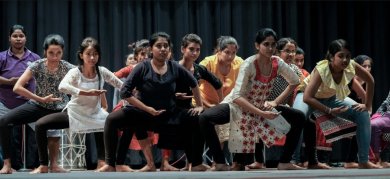
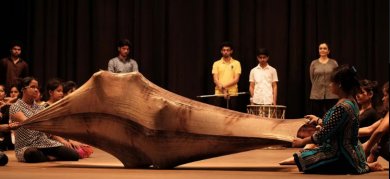
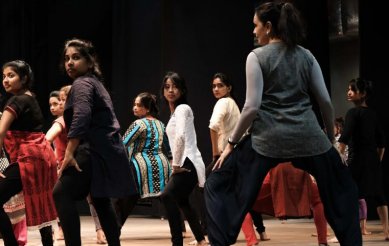
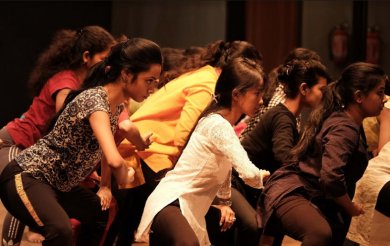
A glimpse of Dr. Anita Ratnam’s recent work on re-reading the story of Ahalya, set the tone for the evening. Covered in a golden piece of cloth, Ratnam depicted with movements within the cloth, how Ahalya, a woman of pure gold, was imprisoned in stone and how she breaks out of it, finding her voice and questioning the injustices faced by her. This was followed by a performance which was built on the general idea of contact where the performers carved out various imageries of interconnectedness. Effortlessly taking up different shapes of the wall, the wave or the mountain, the performance visually represented the sense of collective that can emerge through such interconnectedness. The most striking imagery was of the wave. The solid fluidity of the wave was captured by the same golden cloth used earlier, which was stitched in the shape of a cylinder with openings on two ends. While two bodies moved inside the cloth, the cloth took continuously flowing shapes resembling waves and two other performers also engaged with the waves from outside the formation. One may interpret that it is only through interconnectedness can collective formations, just like the wave, emerge. One can also say that, through such contact with our selves and other bodies that a sense of belonging can come. The use of voice in the performance was a symbol of the ‘voice’ of the silenced women, which found expression through the movements, songs and poetry. The recitation of Maya Angelou’s poem ‘Phenomenal Woman’, coupled with bold movements invoked ideas of liberation and freedom. How one’s own bodies and ‘spaces’ can be reclaimed through self-realization of the body was also indicated through clapping of hands and stamping of feet. Anita Ratnam’s rendition of Bharatanatyam bols here reiterated the idea that through dance, violence of confinement and boundaries can be questioned. 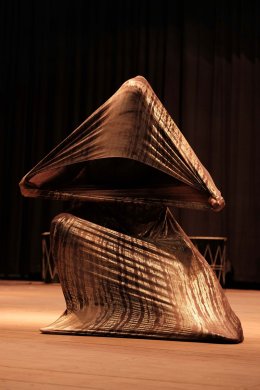
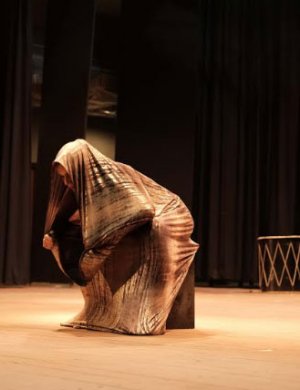
Live drums played by students of Tanmoy Bose, the Tibetan singing bowl strung by Anita Ratnam, recorded music with instruments of Kerala such as the edakka, was blended together so well, that the music lingered on even after the performance. Just like the music, the dance was also eclectic; the contact of bodies drawing from contemporary repertoires, movements based on classical dance styles and the use of ‘voice’ and sounds of feet and hands, influenced by traditions of physical theatre, were weaved in seamlessly. That such a well-blended piece with complete coordination of performers was a result of only a four day workshop is commendable. JNU academic Urmimala Sarkar summed it up, "Continuing in the ways established by Kolkata Sanved in the last few years, 'Dance for Revolution' this year had Dr. Anita Ratnam as its brand ambassador. The workshop led performance once again reaffirmed our belief in the strength of dance and the dancing body as the tool and site for changing vulnerability into strength, and fear into determination and pleasure. The beautifully articulated message was to claim rights to happiness, pleasure and decision making and work together to stop violence against women." |